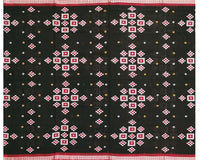
Khordha )is a city and a municipality area in Khordha district in the Indian state of Odisha. Bhubaneswar, the capital of Odisha, belongs to Khordha district and is only 25 km from Khordha town. Odisha State Highway 1 and National Highway 05 runs via this town.
History:-
It was the capital of Odisha from 1568 to 1803. It is also known for its fort, often described as the "last independent fort". The commander who kept it free from British East India Company was ), Bakshi Jagabandhu, popularly called 'Paika Bakshi'.
The Savaras tribal group, who are still to be found in the district in some pockets, once heavily populated the area. Khurda came into prominence when the first Rajas of the Khordha dynasty, Ramachandra Deva, made it the capital of his kingdom during the last part of the 16th century. Khurda suffered repeated onslaughts from Muslim and Maratha cavalry but its royal house retained independence till 1804 when the British East India Company dispossessed Raja of his territory following the Second Anglo-Maratha War.
Khurda occupies a distinct place in the historical map of Odisha. Khurda was the capital of Odisha Kingdom from 1568. The British government took Odisha under its rule in 1803. But it could not include Khurda in its territory till 1827. The strong protest from Paikas of Khurda shook the backbone of British rule in Odisha. Khurdagada is known as the "Last Independent Fort" of India. Now the remains of this historic fort lie as an evidence of India's glorious past. Bhubaneswar, the capital of Odisha belongs to this district.
Tourism:-
Kedareswar Temple :
Dedicated to Siva (who is also called the Kedareswar) and Goddess Gouri, the temple is situated within the same premises next to the Mukteswar Temple. The legend goes that king Lalatendu Kesari, after a tragic episode relating to two lovers Kedar and Gouri, had built this temple in their memory.
Svarnajalesvara temple:
The Svarnajalesvara temple, since restored is located near the Kotitirtha tank and temple. It is a replica of the deul of the Parasuramesvara temple, both architecturally and sculpturally.
The three ruined temples, commonly known as Lakshmaneswar, Bharateswar and Satrughneswar, standing in a row opposite and the much later Rameshwar temple are generally regarded as the earliest temples, being assigned to the closing of the sixth or beginning of the seventh century A.D.
Brahmesvara :
According to an inscription originally attached with the temple (now missing), the temple was built to enshrine a linga called Brahmesvara by Kolavati, the mother of Somavamsi king Uddyotakesari, in the latter's eighteenth regnal year at a locality known as Siddhartha at Ekamra. Thus the temple provides a datum line in the chronology of Orissan architecture.
Megheswar :
According to an inscription the Meghesvara temple along with the tank near it, came into existence at the instance of Svapnesvara, brother-in-law of the Ganga king Rajaraja (circa A.D.1171-92) during the reign of the latter's brother Anangabhima (circa A.D.1192-95).
Parasurameswar :
This is the best-preserved specimen of the early group of Orissan temples assignable to the 7th century A.D. It has a flat-roofed rectangular pillared hall (Jagamohana) attached to a "Triratha" Sanctum (Deul) about 12.8 metres high, which carried a squat heavy-shouldered Sikhara. Its carvings are known for their simple charm.
Rajarani :
Picturesquely set the Rajarani temple is a combination of grace and elegance, famous alike for its sculptural embellishments and the unusual formation of its tower. Facng east, the double amlas, crowning some of the anga-sikharas are reminiscent of the Kandariya Mahadeva temple of Khajuraho. Built in the 11th century the specialty of this temple is that it has no presiding deity.
Siddeshwar :
Signalling the end of the first phase and anticipating the second phase, the Mukteswar temple, facing west is an important landmark in the progressive course of the architectural movement in Bhubaneswar. To the north-west of the Mukteswar temple is the Siddhesvara temple. The temple is a specimen of the khakkhara Order, in which the emergence of the typical Orissan form is almost complete.
Lingaraj temple:
The product of the accumulated and crystallised experience of several centuries, the Lingaraj temple, built in 617-657 A.D., is the quintessence of Orissan architecture. In the elegance of its proportions and the richness of its surface treatment, it is one of the most finished and refined manifestation of temple architecture in India.
Dhauli :
The Peace Pagoda built by the Kalinga Nippon Budha Sangha in 1973 and known as Shanti Stupa commemorates the change of heart of Emperor Ashok and the journey of Buddhism to the nation. There are two temples at Dhauli. One of Vairangeswar Mahadev and Dhabaleswar Mahadev. The proclamations of Emperor Ashok are recorded in Prakrit language in bhramin script on the rock of Dhauli on the Southeast end.
District Headquarter: Khordha
State Capital: Bhubaneswar
Nearest Railway Station: Bhubaneswar
Nearest Airport: Bhubaneswar
How to Reach:
The nearest airport is Biju Patnaik Airport, Bhuwaneswar, which is 6 km away. Well connected by rail to all major tour destinations of the country. Bhubaneswar is on the National Highway linking Kolkata 480 km to Chennai 1225 km. There are only a few buses specifically plying to the caves but there are plenty going by the near by road junction. Otherwise you can also avail private cars and taxis from Bhubaneswar station
NandanKanan :
Nandan Kanan National Park has situated 20 Km from Bhubaneswar, the capital city of Odisha, India. The name Nandan Kanan means Garden of Pleasure, which gets justified when one enters the park. Along the banks of Lake Kanjia and amidst the natural forest, is located. The Zoo has earned International Reputation for breeding of white royal Bengal tiger in captivity and has two separate safaris for Lions and Tigers
There is a Botanical Garden on the northern side of the zoological park overlooking the Kanjia Lake which is a resort of delight for the boating lover. Elephant Ride, toy train and ropeway amusements are also available in the Park District Headquarter: Khordha
State Capital: Bhubaneswar
Nearest Railway Station: Bhubaneswar
Nearest Airport: Bhubaneswar
How to Reach:
The nearest airport is Biju Patnaik Airport, Bhubaneswar, which is 6 km away. Well connected by rail to all major tour destinations of the country. Bhubaneswar is on the National Highway linking Kolkata 480 km to Chennai 1225 km. There are only a few buses specifically plying to the caves but there are plenty going by the near by road junction. Otherwise, you can also avail private cars and taxis from Bhubaneswar station
District Headquarter: Khordha
State Capital: Bhubaneswar
Nearest Railway Station: Barang
Nearest Airport: Bhubaneswar
How to Reach:
The nearest airport is the Biju Pattnaik Airport. Bhubaneswar about 20 km from Nandankanan. One can hire taxi directly from the Airport to reach the destination. The nearest railway station to Nandankanan is Barang Station which 3 km's from NandanKanan but the express and superfast trains normally do n0t halt here. It is advisable for the tourists to drop at Bhubaneswar Station it is near about 15kms from Nandankanan and hire Taxi, Auto rickshaw to reach Nandankanan. The city Buses are also available near the Rly Station From which Travelers can get direct Bus to Nandankanan. Bhubaneswar is well connected to other parts of the state. A number of City buses and town buses are available from Bhubaneswar to Nandankanan.
Khandagiri :
The Khandagiri and Udayagiri Crave relive the memories of Kalinga Empire under the Jain emperor Kharvela. There is about 40 rock cut cave adoring the two hills separated by a road.
It is believed that the founder of Jain faith, Mahavir had visited Udayagiri and khandagiri in the 6th Century B.C. Modern scholars are found in Rani and Hati Gumpha in the Udayagiti with a description of the culture of dance in Orissa as far before as the 2nd century B.C.
Modern scholars are of the opinion that the Udayagiri cave complex was also a theatre complex. Emperor Kharvela was a staunch and a great patron of culture. It is possible that he had created the caves for use of Jain ascetics as well as for cultural shows.
- Arikama: Village Arikama under Bolagarh block is famous for Maa Koshalsuni mandir in the forest. This green forest is protected by villagers of Arikama, Thanapalli etc. It is a picnic spot. The annual festival on Mahasthami, Raja festival, annual Yagna are some of the festivals observed by the villagers. It is around 28 km away from Khurda and lies on Rajsunakhala Dhalapathar Road. It is around 5 km from Dhalapathar and 9 km from Rajsunakhala.
- Atri (Hot Spring): It is situated in the village of Baghamari, at the distance of 42 km from Bhubaneswar and nearly 14 km from Khordha bus stand. It is famous for its Sulfur-Water springs and a temple dedicated to Lord Hatakeswara (Lord Shiva).
- Banapur: Banapur is famous for Maa Bhagabati (one of the incarnations of Hindu Goddess Maa Durga) temple. One of the interesting thing on display is that of a heavy iron piece that floats on water.
- Brunei: This temple is situated on the famous Brunei hills. It is at a distance of 28 km from Bhubaneswar. Goddess Brunei is the famous deity of Khurda. A beautiful stream flows from the hills which are known as Swarna Ganga, which enhances the beauty of this place. This place is recognised as one of the most significant historic places of Odisha.
- Bhubaneswar: It is the Capital city of Odisha, which was also known in the ancient times as the Kingdom of Kalinga. Bhubaneswar is popularly known as the Temple City of India due to its large number of ancient temples (most notable among them being Lingaraj Temple, Khandagiri, Kedar Gouri, Ram Mandir, etc.). This city also features attractions like Odisha State Museum, Bindusagar Tank, Rabindra Mandap, Raj Bhavan, Legislative Assembly, Nandankanan, City Parks and Gardens, etc. This is one of the major shopping centres in Odisha.
- Buddhanath Temple: An 11th-century temple dedicated to the Hindu god Shiva located near the town of Balipatna about 25 km from Bhubaneswar
- Chilika: Situated at a distance of 100 km from the state capital Bhubaneswar, Chilika (or Chilka) lake is the largest lake in India. The lake is surrounded by natural scenic beauty. The Indian Naval Training centre is also situated nearby. Several types of migratory birds visit Chilika with the advent of different seasons (mostly during winter). The lake has been declared as a Bird Sanctuary by the Odisha State government. There are numerous islands within the lake, and one such picturesque island is called Kalijai, which hosts Kalijai Temple, an important place of worship for the nearby people.
- Deras and Jhumka: These are two beautiful picnic spots situated at a distance of 15 km from Bhubaneswar. They are two dams surrounded by a dense forest on three sides giving it the sense of exhilarating scenic beauty and is a very good picnic spot. It is very popular with the picnickers during the winter season where thousands of picnickers flock there.
- Dhauligiri: It is situated at a distance of 15 km from Bhubaneswar. The rock edict of Dhauli bears the early history of Kalinga and this rock edict was engraved by Emperor Ashoka.
- Garamanitri: Garamanitri is famous for Ramchandi temple and is a picnic spot.
- Golabai: Golabai Sasan is known mostly for its medieval temple architecture. This settlement site is located on the left bank of the Mandakini (locally Mallaguni) river, near the Chilka lake. Trial excavations in 1991 showed a succession of Chalcolithic and Iron Age assemblages, presumably dating to the 2nd and 1st millennia BC. The pottery as dull red and grey wares. Ground lithics bring to mind those of East and South-east Asia. This site and Sankarjang are the main sites in Odisha which represent this time.
- Guapur: Located midway between Bhubaneshwar and Puri, this peaceful village is accessible through a road to the east of the highway. It is 20 km from Bhubaneshwar. Beautiful rice paddy landscapes and serene temples await anyone who goes there.
- Hatabasta: Village Hatabasta (Srichandanpurpatna) is 3 km from Raj-Sunakhela and Famous for Goddess Maa Jogamaya. There is a big pond which is covered with lotus flowers in all season and very very beautiful known as Bada Pokhari where Lord Sapaneswar worshipped by the village of Hatabasta. Many festivals are celebrated in this village such as "Jhamu Yatra","Rama Lila","Kartika Purnima "
- Kaipadar: Kaipadar is situated at a distance of 15 km from Khurda. A beautiful mosque is present here. This place is the meeting place of Hindus and Muslims.
- Khandagiri and Udayagiri: These twin hills are situated in Bhubaneswar. There are 117 caves in these twin hills. The Rani Gumpha is the largest cave in the Udaygiri hill. Another famous cave called the Hati Gumpha is also there where the rock is engraved with Hathigumpha inscription by King Kharavela. These caves contain a Barabhuja temple and a Jain temple.
- Lingaraj Temple: Lingaraj temple is the largest and most famous Lord Shiva temple in Odisha. A couple of other temples exist there around it.
- Maa Ugra Tara: This temple is located in between Rameswar chowk and chandpur (Tangi block) in NH-5 and 55 km from Bhubaneswar towards Balugaon and 35 km from Balugaon towards BBSR. It is the beautiful nature location for the picnic & also movie shooting. Maa ugratara is the deity of entire Tangi block. Nearby, there is a village named Bhusandpur is the largest village among Odisha. This place is famous for fishermen's ground because Chilika lake is nearby to this village.
- Nandankanan Zoo: This is a famous Zoo of Odisha situated at a distance of 20 km from Bhubaneswar. It is famous for the Botanical garden, zoo and the natural lake. The recently opened Natural lion safari is the largest of its kind in India. The white tigers present here makes it unique across the world.
- Shishupalgarh: Situated at a distance of 13 km from Bhubaneswar. The ruined fort Shishupalgarh and ancient capital of Kalinga named Toshali are being discovered by the Archaeological Survey of India.
- Shikhar Chandi: It is situated at a distance of 15 km from Bhubaneswar towards Nandankanan. A temple dedicated to Goddess Chandi on the hill top and the scenic beauty is the main attraction of this place.
- Maa Kosalasuni Temple: This place is 45 km from Bhubaneswar and 20 km from Khordha near side of NH-Khordha-Kalapathar road. It is the very nice place because sal forest and hill are around here.
Economy:-
It is renowned for its brass utensils cottage industries, cable factory, spinning mills, watch repairing factory, railway coach repairing factory, oil industries, Coca-Cola bottling plant and small metal industries.
References:-
1:-https://en.wikipedia.org/wiki/Khordha_district
2:-https://en.wikipedia.org/wiki/Khordha
3:-http://www.nuaodisha.com/Odisha-Tourism/Tourist-Places-in-Khurda.htm








